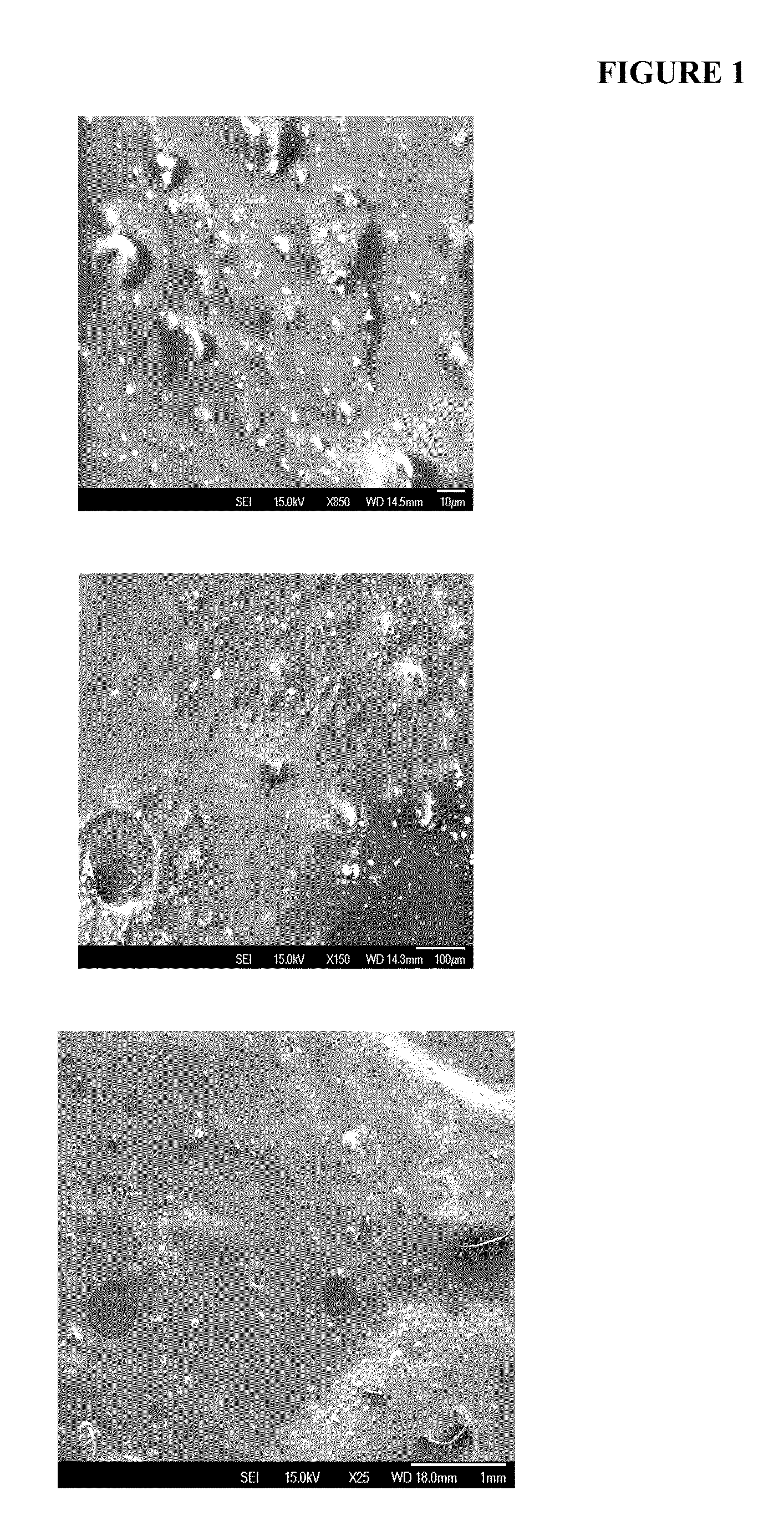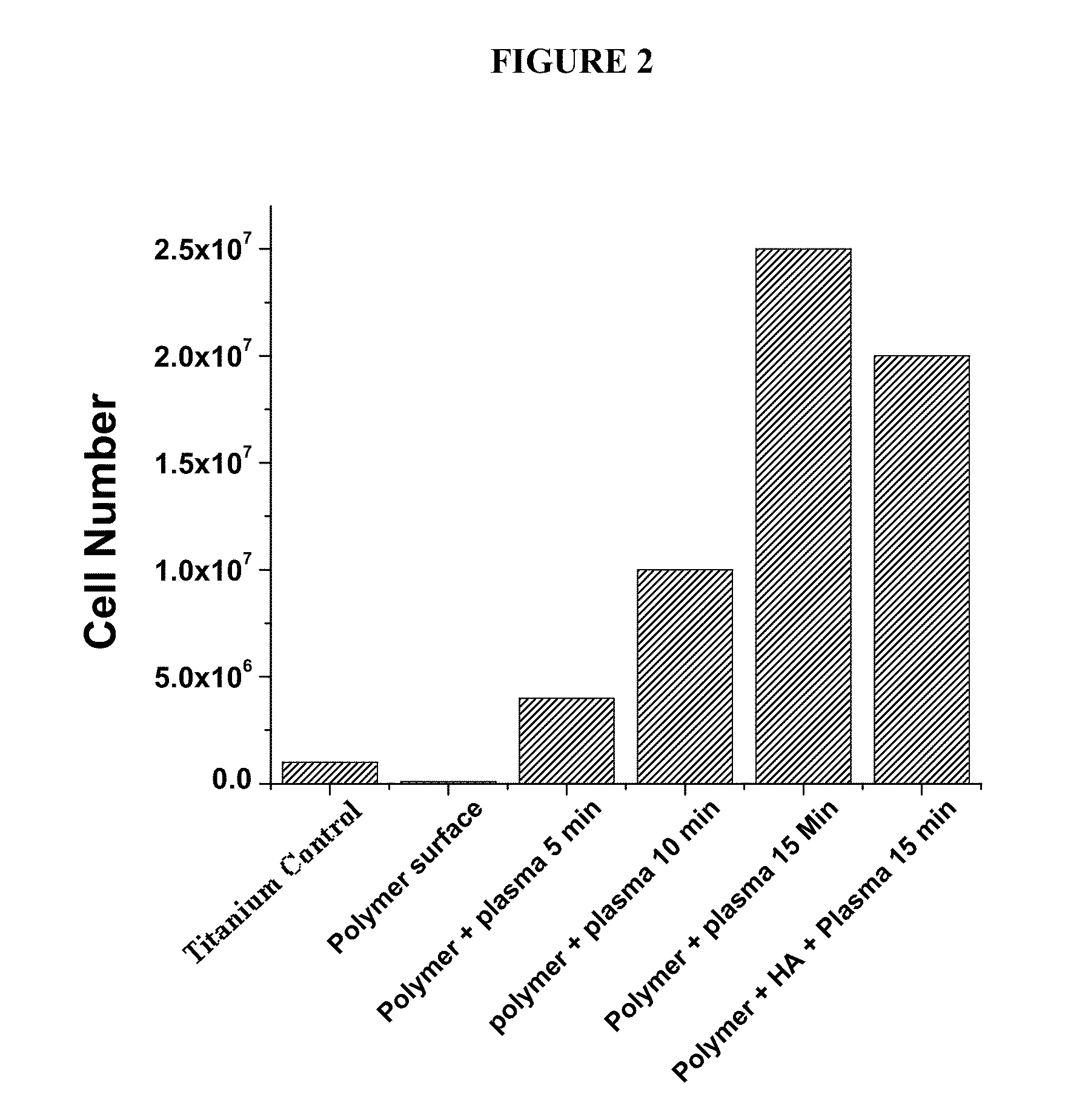Advanced bio-compatible polymer surface coatings for implants and tissue engineering scaffolds
a biocompatible and scaffold technology, applied in the field of advanced biocompatible polymer surface coatings for implants and tissue engineering scaffolds, can solve the problems of many implants being lost, poor integration of the implant surface with the bone/tissue structure, and limited implant biocompatibility, so as to promote cell adhesion and proliferation, enhance the hydrophilic nature of the surface, and enhance the binding of bioactive agents
- Summary
- Abstract
- Description
- Claims
- Application Information
AI Technical Summary
Benefits of technology
Problems solved by technology
Method used
Image
Examples
example 1
Preparation of Polyurethane-Hydroxyapatite Composite Materials
[0044]Polyurethane-hydroxyapatite (HA) composite materials are prepared by in-situ polymerization. The nanomaterials are mixed in the solvent of the polymeric scaffold and deposited by air spraying.
[0045]Similarly, for industrial applications, the composite films can be deposited by e-beam deposition, ion beam deposition, pulsed laser deposition, electrospray, or any other method known in the art, on the implant surfaces.
[0046]The coating can be exposed to any type of plasma discharge and covered with growth factors, proteins, amino acids, drugs, hydroxyapatite, or any other bioactive agent.
[0047]FIG. 1 presents a surface created by the deposition of the polymeric / nano-hydroxyapatite nanocomposites.
example 2
Cell Growth Assay on Coated and Non-Coated Surfaces
[0048]Osteoblast cells were incubated in tissue culture on top of the coatings and controls for 7 days at 37 deg. C. At day 0, at the start of the experiment, the number of cells was 105. The control surfaces were a roughened titanium surface and an untreated polymer surface. After 7 days in tissue culture, osteoblasts were counted using standardized cell counting methods. The number of cells on the untreated polymer surface was 105. The number of cells on the second control (titanium surface) was 106. The results for the polyurethane coatings and HA are shown in FIG. 2.
[0049]As show in FIG. 2, there is a significant increase in the number of cells on the plasma treated polymer coatings, as well as the polymer treated and HA coatings. The polymer surfaces which were plasma treated between 10 and 15 minutes demonstrated approximately 20 times more cells per unit area versus the controls. The plasma treated polymer surface with hydrox...
example 3
Visualization of Bone Cells on Various Surfaces
[0050]FIG. 3 shows enhanced growth of bone cells on the polymeric surfaces exposed to plasma and doped with HA nanoparticles (b) as compared to the regular Ti surfaces (a). The corrugated polymeric surfaces (doped with HA nanoparticles and plasma treated) (c) due to various modifications, have also been found to enhance significantly the proliferation of osteoblast cells. The visualization was done with optical microscopy and cellular staining.
PUM
| Property | Measurement | Unit |
|---|---|---|
| Size | aaaaa | aaaaa |
| Size | aaaaa | aaaaa |
| Crystallinity | aaaaa | aaaaa |
Abstract
Description
Claims
Application Information
 Login to View More
Login to View More - R&D
- Intellectual Property
- Life Sciences
- Materials
- Tech Scout
- Unparalleled Data Quality
- Higher Quality Content
- 60% Fewer Hallucinations
Browse by: Latest US Patents, China's latest patents, Technical Efficacy Thesaurus, Application Domain, Technology Topic, Popular Technical Reports.
© 2025 PatSnap. All rights reserved.Legal|Privacy policy|Modern Slavery Act Transparency Statement|Sitemap|About US| Contact US: help@patsnap.com



